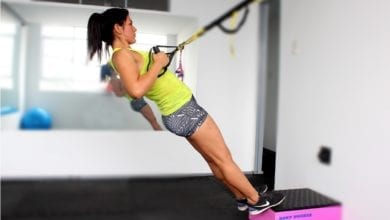
Our Editors independently research, test, and rate what we feel are the best products. We use affiliate links and may receive a small commission on purchases.
If you’re overweight and you want to start running, then you’re in the right place. While you may think of runners as a certain shape or size, the cool thing is that runners come in all weights, ages, and backgrounds!
Running is one of the best ways to improve how you feel, get in shape, and improve body composition, among so many other benefits. We’re here to fill you in on the best running tips if you’re overweight, to make sure that you’re as successful as you can be!
Check in with Your Physician
Before you start any program, it’s important that you first check with your physician and make sure that this is right for you. This goes double if you don’t partake in any physical activity like walking or climbing the stairs.
Make sure that when you’re talking to your doctor, that you share your running plan and your goals with them so they can give you accurate advice. This is for your own safety to ensure they let you know if there are any potential health issues with your ideal plan and how they can create something that will work for you in terms of results and caution.
Proper Footwear
Having the right running shoes is crucial to literally every runner out there, but more so if you’re overweight or not used to running. Ill-fitting shoes can cause anything from joint pain, muscle strains, tendonitis, imbalance, increased fatigue, and much more!
While purchasing shoes online is often the best way to go, you can easily get your running gait analyzed so they can tell you if you overpronate, supinate, require extra cushioning, arch support, and so on. From here, you can go online and select some good cushioned running shoes for you while saving money.
Make sure that you are replacing your running shoes regularly. Professionals recommend doing so every 300 to 500 miles, though this all depends on what kind of surface you’re running on, your weight, and how exactly you’re running (sprinting, jogging, etc.).
The Right Running Gear
It’s not only important to have the right running shoes, but the right running clothing as well! You want to get clothing that is not only made for running, but that which fits you well. We really like compression clothing as it helps reduce the chance of chafing, but still looks and feels great.
In fact, if you score some high-quality compression clothing you can count on it not only wicking moisture away from the skin but offering additional support and helping eliminate extra muscle fatigue!
For most of us, under our arms and the inner thighs are the most susceptible to chafing which can not only be irritating and distracting, but downright painful! This can further keep you from continuing on your runs or keep you from creating your habit of running which will prevent you from setting yourself up for success.
Start Slow
If you’re not used to running, you really do need to move slowly into this. Taking on too much too quickly can lead not only to injury, but you burning out. Running is not for everyone initially, and to be honest, it’s not all that easy. However, it’s incredibly rewarding mentally and physically, and is a sport that can really change lives for the better.
We recommend starting out by walking. You can do this on a treadmill or outside, depending on your environment. Many people also enjoy walking around indoor and outdoor tracks as it makes it easy to track their distance traveled.
Start out by doing 5-10 minutes if that’s as much as you can do right now. There’s no reason to feel embarrassed or ashamed if that’s the case. We all have to start somewhere and the cool thing is from here, you’ll only get better!
What’s most important is consistency and dedication, so try to do this every day or a minimum of 5 days a week until you develop the habit. Developing a habit takes approximately 21 days, so even though it may be tough to stay consistent at first, it will get increasingly easier in less than a month.
Continue Walking
Once you’re able to comfortably walk for 30-minute sessions at least 4-5 times per week, you’re ready to elevate yourself. Now, you’ll start with 5-minute slow walking blocks to warm up, then boost the pace to a brisk walk and stay at this pace for up to 30 minutes.
Once you’ve completed the 30 minutes, come back down to the slow walking pace and do this for 5 minutes to gently reduce the heart rate.
You’ll stay with this workout until you don’t feel like you’re exerting much energy by doing it. This is where we begin to move into running.
Run Walking
Let’s keep the calorie boosting efforts up by adding in running. You can start by walking at a brisk pace for 15 minutes then running at a quicker pace for a minute and recovering (walking or slower jogging) for 2 minutes. You’ll continue with this routine until you’ve accomplished 30-45 minutes and cool down for 5 minutes again.
This will definitely be more challenging but you’ll also see quicker results in every aspect. Once this gets comfortable for you, up the running part to 1.5 minutes and recover for 1.5 minutes! Then increase your running to 2 minutes but keep your recovery times to 1.5 minutes max afterward so it looks like this:
Warm Up: 5 minutes walking
Running: 2 minutes
Recovery: 1.5 minutes
(Repeat Running/Recovery until you accomplish 30-45 minutes)
Summary
Now that you’ve had the chance to read about how you can begin running effectively if you’re overweight, are you ready to get started? We hope that our guide has been able to give you a deeper understanding of the right way to go about getting started to minimize the risk of injury and burnout.
Running is truly a sport that can give you better mental and physical health, help create lasting friendships, explore nature, and so much more. Thanks for tuning in and we’ll see you again soon!




